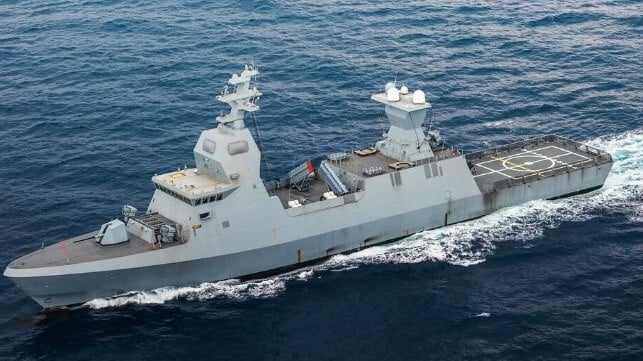Israeli Navy Launches Deep Strike Missile Attack on Houthi Powerplant

Early on Sunday morning, Israeli corvettes launched a missile attack on the Haziz power generation plant in the Houthi capital of Sana’a, Yemen. Israeli sources indicate the attack was mounted in response to the latest Houthi attempt to attack Israel on August 14.
A Houthi military spokesman had previously claimed that a ballistic missile was fired at Ben Gurion Airport, and that six drones had also been launched against Israel. The ballistic missile was intercepted well before it reached Israeli territory, one drone was shot down south of Eilat, and the other five drones have not yet arrived. The Houthi attack did not necessitate the sounding of any civil defense alarms.
This is the second time that the Israeli Navy has been used to attack targets in Yemen, and is particularly noteworthy as it demonstrates that the Israeli Navy’s Saar-6 corvettes - which are likely to have been used to mount the attack - have more than just a littoral strike capability. The range demonstrated in this particular attack was at least 130 miles. The missile likely to have been used is the Blue Spear, developed for land attack purposes from the Gabriel anti-ship missile, and reputed to have a range of 300 miles carrying a 150lb warhead. Ukraine is believed to be reverse-engineering a version of this missile.
Use of the Navy avoids a long-range manned aircraft operation 1,250 miles down the Red Sea, involving not only F-16 strike platforms, but also intelligence, surveillance and refueling aircraft, search and rescue capability and possibly specialist aircraft for suppressing air defenses. Such operations are expensive in terms of fuel and aircrew hours, but also put aircrew at risk. Use of IAI Heron TP Eitan and the Elbit Systems Hermes 900 Kochav drones could also be a cost-effective alternative, except that the Houthis have demonstrated a capability to shoot down drones over land, so drone attacks are best reserved for harbor and coastal targets. The use of the Navy is not only cost-effective, it also has operational security advantages, as there is almost no signature of an impending attack.
Social media footage from Sana’a shows huge flames and a distraught local population, suggesting that the attack appears to have caused considerable damage. Infrastructure repairs in Yemen are particularly difficult, as routes into the country for spare parts are heavily circumscribed.
BREAKING: (literally)
— Mossad Commentary (@MOSSADil) August 17, 2025
Explosion near the power station in Sana'a causing a power outage in
large parts of Yemen.
Cause of the explosion is unknown for now. pic.twitter.com/ClAYWtsgNt
This latest attack comes on top of 13 previous Israeli attacks, some of which also targeted the power infrastructure in Houthi-controlled areas. The Haziz generating plant was the last operational facility supplying Sana’a public electricity network.
Shortly after the Israeli strike on Sunday, Houthi militants launched another ballistic missile attack on Israel. The single missile was intercepted, the Israeli Defense Forces said, and no damage was reported. Israeli officials pledged a forceful response.
"This is only the beginning,” Israeli Defense Minister Israel Katz said following Sunday's Houthi attack. "What follows will be strong and painful. Whoever raises a hand against Israel, his hand will be cut off."
